
Contact

Home
Hoaxes & Pranks: Monster Hunters
DEAD MEN'S HEADS.
RELICS OF CANNIBAL FEASTS.
The Advertiser (Adelaide, SA)
Date: January 5, 1927
Page Number: 11
Mr. F. A. Mitchell-Hodges, the Central American explorer, mounted the rostrum of the City Temple, London, recently (says the London "Daily Express"), carrying a mall leather attache case full of human heads.
The heads were not much larger than dolls' heads, but they were the heads of folly-frown men and women, beheaded probably thousands of years ago in the buried cites of Lubatuum. A thrill ran through the audience when Mr. Mitchell-Hedges held up some of the heads.
"How these heads have been reduced to their present size is," said Mr. Mitchell-Hedges, "a mystery which no one can explain. There is nothing known to science which can produce this extraordinary phenomenon. Everything is perfect to the smallest detail; even the hair has been reduced in size, strictly to proportion.
Mr. Mitchell-Hedges, who gave an account of his recent exploration in unknown Central America, said that the natives apparently removed all the bones and brain from their victims' heads, and ate them in the belief that they would fill themselves with their victims' knowledge.
He alluded to a controversy whether great fish eat people or not. "This," he said, "is a point which has been argued and debated for so long that I will let you judge for yourself," and he flashed on the sheet pictures of monsters of the deep which he and Lady Richmond Brown— who was present at the lecture—hooked on their expedition.
The hooks weighed 14 pounds each, and the first large catch was a fish which measured 14 ft. 6 in., and weighed 1,460 Ib. Another monster weighed 5,700 lb., and was 31 ft. in length. The greatest catch they had was a tiger shark, which weighed 1,920 lb. One giant fish mea- sured 8 ft. 7 in. across. It had been bitten by another monster. "Imagine," said Mr. Mitchell-Hedges, "the size of a fish which could seize a fish measuring nearly 9 ft. across as a bait, and then ask yourself what would happen if you got in the way of such a monster."
Wonderful pictures were shown of hitherto unknown regions, into which Mr. Mitchell-Hedges and Lady Richmond Brown penetrated, and Mr. Mitchell-Hedges said:—"We may yet make discoveries in these buried cities which will shift the cradle of the world from where it is to-day. When we hacked our way through what looked like immense tracts of jungle we came across great stone steps. There was a vast amphitheatre which teamed, perhaps, 10,000 persons. I can only leave you to imagine what went on in that amphitheatre in those remote times.
"We came across wonderful architecture and sculpture, which has stood the storms of a thousand of years. We can show nothing finer today. They even had a sort of daily newspaper of their own, with the events cut out of stone."
F. A. Mitchell-Hedges part 10



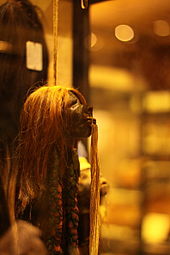

The process of creating a shrunken head begins with removing the skull from the head. An incision is made on the back of the neck and all the skin and flesh is removed from the cranium. Red seeds are placed underneath the eyelids and the eyelids are sewn shut. The mouth is held together with three palm pins. Fat from the flesh of the head is removed. It is here that a wooden ball is placed in order to keep the form. The flesh is then boiled in water that has been saturated with a number of herbs containing tannins. The head is then dried with hot rocks and sand, while molding it to retain its human features. The skin is then rubbed down with charcoal ash. Decorative beads are added to the head.
ANCIENT MAYA.
RECENT EXCAVATIONS.
The Brisbane Courier (Qld.)
Date: January 5, 1927
Page Number: 18

FISHING THRILLS IN THE STRAITS.
By C. Coral
The Brisbane Courier (Qld.)
Date: January 5, 1927
Page Number: 18

EXPLORER IN LONDON.
NIGHT OF EXCITEMENT.
Mysterious Attack.
The Argus (Melbourne, Vic.)
Date: January 17, 1927
Page Number: 17
LONDON, Jan. 10.
Immediately after he had been broadcasting in London a talk dealing with his adventures in Central America, in which the explorer, Mr. Frederick Mitchell-Hedges, declared that life would be very grey without excitement, he was the subject of a mysterious "hold-up" in a lonely spot. While he was motoring home to Bournemouth a man suddenly appeared on the roadway, and appealed to the explorer and his chauffeur to stop and assist an injured man to hospital. Mr. Mitchell-Hedges' chauffeur accompanied the man, and when he did not return Mr. Mitchell-Hedges and a companion followed, and were amazed to discover the chauffeur bound with ropes on the roadside. Immediately five or six men attacked Mr. Hedges-Mitchell and his companion. A struggle occurred and eventually the attackers ran off in the darkness.
When Mr. Mitchell-Hedges and party picked themselves up andreturned to the motor-car they found that Mr. Mitchell-Hedges's handbag containing valuable papers relating to business in Hondurus as well as scecial specimens of human heads "shrunk" by Central American Indians by a secret process, were all missing. Mr. Mitchell-Hedges, who was obviously affected by his rough handling, was reticent, and in a statement said that he did not want any publicity regarding the adventure, but would give £5,000 to undo what had happened.
[Mr. Mitchell-Hedges is a well known explorer and author. His chief explorations have been in Central America, where he discovered a new race of people and a buried Maya city. He is also noted for his deep-sea research work in the Caribbean Sea and the Pacific Ocean, during which he has caught many giant fish and has obtained a large collection of previously unrecorded specimens, now in the British Museum. As an author he has concentrated mainly on journalistic work and scientific articles. His chief book is "Battles With Giant Fish."]

ATTACK ON EXPLORER
A PRACTICAL JOKE
Barrier Miner (Broken Hill, NSW)
Date: January 17, 1927
Page Number: 4
(A.P.A. Message.)
London, January 16.
Mr. F. A. Mitchell-Hedges, the well-known explorer and author, to-night announced the receipt of a letter showing that a recent attack on him on the Portsmouth-road was merely a practical joke by half a dozen youths who resented the explorer's recent condemnation of modern young men for their lack of enterprise, pluck, and the spirit of adventure. The explorer's bag was restored unopened. Mr. Mitchell-Hedges sportingly accepted the explanation, and says that the writer of the letter anyhow has a sporting black eye.

ATTACK ON EXPLORER
PLANNED BY A WOMAN.
Barrier Miner (Broken Hill, NSW)
Date: January 20, 1927
Page Number: 1
(Special to "The Miner.")
London, January 17.
The "Westminster Gazette" discloses that Miss Eileen Graves, a young and attractive woman, planned the attack on Saturday on Mr. Mitchell-Hedges, the explorer.
When interviewed she said: "We knew that he could punch. We decided to take his bag, not dreaming of what it contained. We held secret meetings and planned that a motor cyclist should follow his car, spurt ahead, and toot twice as a signal. This was heard just as our men were giving up the job. Mr. Hedges made a wonderful fight, and poor Bagot Gray, our leader, was struck in the eye and on the mouth. We believe that our ear was traced through our having to call in at a garage to have a puncture repaired."

A JUNGLE CITY.
UNSOLVED RIDDLE OF LOST MAYA RACES.
The Advertiser (Adelaide, SA)
Date: January 31, 1927
Page Number: 4

THE NEW EXPLORER.
The Advertiser (Adelaide, SA)
Date:February 5, 1927
Page Number: 20
Dr. Frederick Graves thus writes in "Chambers's Journal":—
"There is nothing left to explore!" some one has recently complained in the press, and several times of late the wail has gone up that mystery is in danger and romance all but dead, because all the dark corners of the earth have had to yield their (in most cases rather prosaic) secrets. It is true that practically all the world has been mapped out. The Poles have been reached, the deserts crossed; one can take a Cook's tour through the Sahara, picnic in Tibet, and run a car from the Cape to Cairo. A naturalist has lost himself in the last wild fastness of the Upper Amazon, and two young Americans are mapping the last pieces of Baffin's Land and the Arctic Circle. It is true the rough pioneering has been practically finished, but that was only the surveying. The real exploration is now to come—the work of use and value to the world! Think of the money that has gone in pottering in the jungle, to panting across deserts, to delving in the forests, and to shivering and starving at the Poles, and all for—what? Think of the fortunes that have been spent on Polar expeditions, and what have they taught us or brought us? The lives that have been given to prove that Buggin's Land is stiil unalterable ice, and always will be—though it is quite possible there may be coaI or iron, or for that matter Platinum and the diamond, somewhere beneath it all and hopelessly un-get-at-able for ever!
Now the real thing! The explorer of the future will not need to bother his head about wastes; he will be able to take the profitable and discard the useless, select his ground and unearth for us the old civilisations, arts, learning, history, and treasure of the past—the sort of thing that Mitchell Hedges is doing in Honduras. What do we know of the great loss races? We know that somewhere there are vast stores of buried relics of great civilisations that have faded away with all their learning and treasure. Where are the poems of Sappho, the plays of Menander, the laws of Uri? There must be at least traces of them somewhere. Some of the old seekers were rewarded with great prizes. In 1423 Aurispa returned to Venice from the East with hundreds of manuscripts that have become priceless. Poggio Bracciolini discovered Cicero's Orations in the dustbin of a monastery. Where is the loot of Rome, said to be worth a hundred millions, and buried with Alaric? Where are the great hauls buried by pirates in the Spanish Main in the raids of 1600? Where are the treasures of Samarcand, and the wealth of Antioch? Meredith Townsend tells us that "the wonders of art accumulated for nine hundred years by three civilisations in Constantinople" cannot all have been destroyed by the Turks.
What of the great wastes? Surely they hold and cover strange secrets! It has been said that the very fact that there are great deserts in Asia, Africa, and America means that there were great civilisations there ages ago that cut down the forests, the demolition of which led to desert formation in time. What things may still lie under those endless sands! In Central Asia, Sven Hedin found astonishing Greek gems of art buried in places once under Chinese rule, showing that Hellenism spread very far and wide. In Indian jungles traces crop up of huge cities of the past, revealing wonderful culture. There was a period in the world's history when the Poles were warm jungles and habitable, while the rest of our globe was fast bound in a dreadful glacal grip. What does the ice hide there? What strange races of the dim twiliglit of life may not still be found in mummy or skeleton, with crude handicraft or even highly fashioned art? If ever the Polar ice should melt! Fortunes and lives have been thrown away to bring us the everlasting information of unalterable ice and inclemency—which we all had at least the gumption already to know! But some day—ah! centuries after we are gone, perhaps—! Where are the great diamond and emerald mines from which the ancients drew such astounding wealth and beauty? Beneath the sea are buried continents and cities. Again, some day—perhaps! What has been unearthed in Egypt is thin and modern compared with that which may yet come to light. Between the Nile and the Red Sea there is a tract of land that should one day give the world some startling finds; and somewhere in the region of Central America there may lurk things that if ever brought to light may set modern man thinking furiously, and perhaps upset all his views of the past, and remake his rules and opinions for the future.
Geologists have shown that there was at least some truth in the fable of the sinking of vast Atlantis, the continent that went under the waves in a night. It is quite probable that the West Indies are remnants of its mountain tops and tablelands thrown up again by volcanic action.
In Nigeria travellers have found life, where, far beneath the present dirty negro village, lies the shell of a great white race with Greek art and carving; whie in Turkestan they have discovered traces of underground cities so strange that archaeologists are puzzled to imagine what kind of beings made and dwelt in them.
There is much for the new explorer to do—something far more valuable than mapping the jungle or the desert surface.

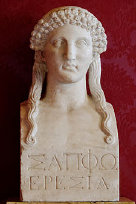
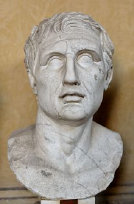


Sappho
Menander
Laws of Uri ?
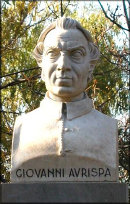

Auspira
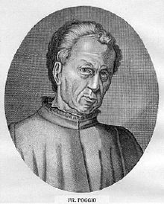

Poggio Bracciolini


Cicero
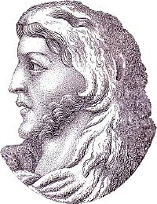

Alarich

Meredith Townsend
"It has been said that the very fact that there are great deserts in Asia, Africa, and America means that there were great civilisations
there ages ago that cut down the forests, the demolition of which led to desert formation in time." FALSE
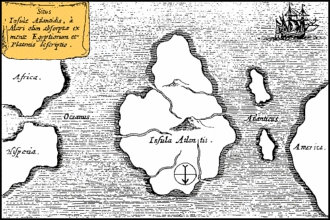

Atlantis
MOYA RELICS.
FOUND IN HONDURAS.
Cairns Post (Qld.)
Date:February 19, 1927
Page Number: 11
lt is likely that important excavation work in British Honduras, which has been brought to the notice of the Trustees of the British Museum by Mr. Mitchell Hedges, the well-known explorer, will be taken up by that body and will be carried out either on its behalf or by persons nominated by it. At all events, it is understood that the Trustees would be willing to make a grant towards the expenses, but that support from the public would also be necessary.
Some excavations already made in British Honduras by Mr. Mitchell Hedges have revealed important relics of Maya civilisation. Mr. Hedges, who does not wish to make further excavations himself, has done a little work on the area which the trustees have now under consideration. Some photographs which he took after clearing it of bush were submitted to the Museum, following which, states an exchange, Mr. T. A. Joyce, deputy-keeper of the Department of Ceramics and Ethnography, paid a visit to the site last spring and made a thorough investigation.
He has now prepared his report for submission to the trustees of the British Museum should take in hand and direct any further excavations.
Details of the projected work are not yet available, but it is stated that the area is a large one covered with buildings, showing several stages of occupation, the dates of which have yet to be ascertained. Unlike other
Maya sites, it shows at present no sculpture, and therefore presumably belongs to a different period from others which have been examined.
lt is, nevertheless, certain that it belongs to periods when there were large populations available for the erection and use of such extensive structures as are indicated. Investigations have not gone farther than this, but the promise of discoveries is sufficient to make the trustees anxious to proceed with the work if funds can be obtained for it.

CITY VANISHES.
RAPID JUNGLE GROWTH.
CITADEL OF THE DEAD.
Morning Bulletin (Rockhampton, Qld.)
Date:February 24, 1927
Page Number: 9
A dramatic story of his return to the great ruined Maya City, Lubaantum, in Britith Honduras, was told by Mr. Mitchell-Hedges, the explorer, in a talk from 2LO on his latest expedition with Mr. Joyce, representative of the British Museum (says the London "Daily Chronicle").
Lubaantum lies some 55 miles by river from Punta Gorda, and after an adventurous journey the party reached
the Maya Indian village of San Pedro.
"Half a mile beyond, high above the river, was the welcome sight of our old shack.
"The following morning we took the trail to the ruins—to find they had magically disappeared. It was as if some giant hand had swept [???] and entirely obliterated them.
"Only ten months had elapsed since we had left the great raised city, thoroughly cleaned, and[???] beneath the blaring sun. Now 18 ft. of solid jungle covered all.
"Even more surprising was the fact that since we left the Indians had planted corn. This had grown and been picked, so that this immense growth had sprung from the earth in a period of no more than seven months.
"There were many papaw trees 16 and 17 ft. high, bearing fruit. Cohuna palms were waving everywhere in this gigantic super-heated hot-house.
"In a week we had a camp erected. In a fortnight the great stairways, pyramids, plazas, and courtyards were once more standing cut above the jungle.
"It was a wonderful sight as we fired acres of cut-down vegetation, which had dried rapidly in the sun. Great columns of smoke, resembling a violent volcanic eruption, were shooting hundreds of feet into the air; the jungle was a raging furnace. Hot ashes and volumes of acrid smoke swept over us, while the crackling and roaring of the flames quivered the air only a hundred yards away.
"As we cleared the immense stone edifices, the great ruined Maya city, a veritable city of mystery, grew more impressive and vast every day.
"Standing on the highest pyramid in the setting sun, the full impressiveness of the ruins came to me with irresistible force.
"And into my mind crept a conviction which may be the solution of the inscrutable mystery of Lubaantun. It was that this gigantic citadel was a Mayra city of the dead—a vast cemetery—that within the great amphitheatre the last mythical and solemn rituals were held, and sacrifices made to the spirits of the departed.
"We found this year hundreds of stone-faced mounds, surrounding Lubaantun. Excavations in three of them yielded over 270 specimens, comprising flint and obsidian spear-heads, small green stone, pottery, end figurines. The excavations proved beyond doubt, that these mounds are burial-places."

There is more to this story. Watch how it unfolds in the media...

CONTENTS































